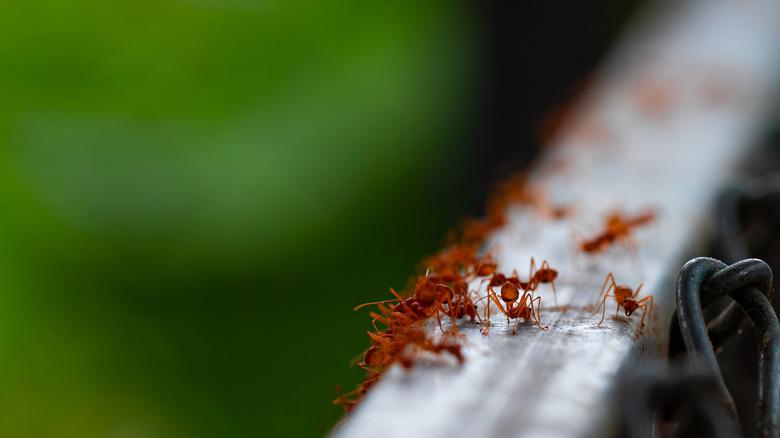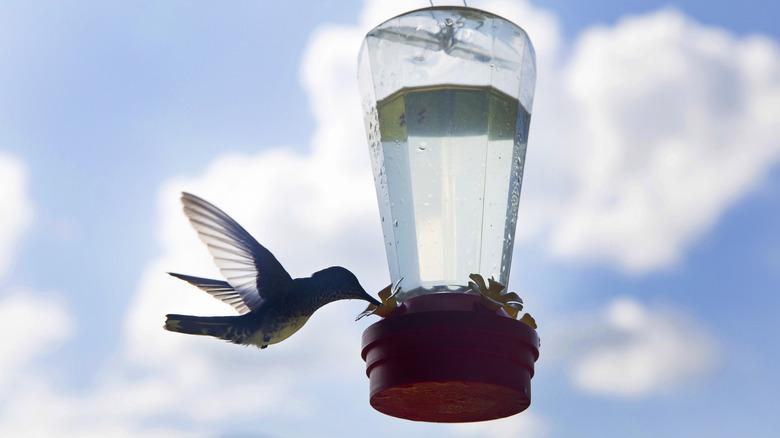Keep Ants Out Of Your Hummingbird Feeder With A Quick And Affordable Hack
Hummingbirds are delightful visitors to have in any yard, and feeding them with their favorite sugary nectar can be a rewarding and encouraging endeavor for garden enthusiasts and amateurs alike. However, that sweet substance you fill your feeders with doesn't just attract feathery friends. According to Colorado State University, ants and other insect sightings grow in number in the spring as the creatures venture out in search of nutrients, and the sweet-smelling hummingbird feeder has exactly what they're looking for.
At first, it can seem impossible to repel resourceful ants from your bird feeder, but using fishing line instead of string to hang it might just be the perfect fix for this common problem. Ants have sticky foot pads and miniscule claws, which allow them to climb a variety of surfaces easily and even invade through vents (and getting rid of ants that come through the vents is a task itself) or up vertical surfaces. However, the slick nature of fishing line means that they will struggle to grip the slippery veneer. The difficulty climbing will not be worth the reward for the ants, and voila! Your hummingbird feeder should be pest-free in no time.
How to hang your hummingbird feeder on fishing line
Whether your feeder came with its own string or you added your one, you'll want to first gently remove it from its place and untie the existing thread. Then, measure out a length of fishing line. Remember, the cord will need to be able to bear the weight of both the feeder itself and the birds sitting on it, so you may want to double it up or choose a thicker line depending on the weight of the feeder.
Then, simply hang it back up. Keep in mind that hummingbird feeders are best placed out of direct sunlight to avoid the sugar water from fermenting and going bad. Additionally, in order to further deter the ants from approaching, it is best to hang your hummingbird feeder at the right height, such as on a tree branch or house gutter where climbing insects cannot reach. Placing the feeder in the shade will also make it less attractive to airborne insects such as flying ants and moths. Finally, remember that fishing line is designed to be nearly invisible, so it is a good idea to tie a ribbon or some kind of tag onto the line to ensure that children and pets don't accidentally collide with it. To stay on top of other pests that may bother the birds, you may also want to research how to keep bees and wasps off a hummingbird feeder.

